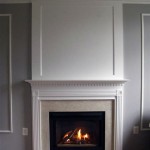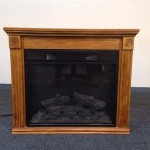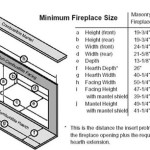Brick Fireplace Design Ideas: A Comprehensive Guide
Brick fireplaces represent a timeless architectural element, blending functionality with aesthetic appeal. They offer a focal point within a room, providing warmth and character. The versatility of brick allows for a wide range of design possibilities, from rustic and traditional to modern and contemporary. When considering a brick fireplace, it is important to evaluate various designs, material choices, and installation techniques to achieve the desired outcome.
This article provides a comprehensive overview of brick fireplace design ideas, exploring different styles, brick types, and design considerations. It aims to offer insight into creating a brick fireplace that complements the overall aesthetic of the living space and provides lasting value.
Understanding Different Brick Fireplace Styles
Brick fireplaces can be categorized into several distinct styles, each offering a unique visual impact. Selecting the appropriate style depends on the architectural context of the home and the desired ambiance of the room. A careful consideration of these styles ensures that the fireplace harmonizes with the existing décor and enhances the overall aesthetic appeal.
Traditional Brick Fireplaces: Traditional brick fireplaces often exhibit classic features such as a raised hearth, ornate mantels, and intricate brickwork. These fireplaces typically incorporate elements like corbels, keystones, and decorative moldings, reflecting a sense of formality and elegance. The brick used in traditional fireplaces often features subtle variations in color and texture, contributing to a warm and inviting atmosphere.
Rustic Brick Fireplaces: Rustic brick fireplaces are characterized by their rugged, natural appearance. They often feature rough-hewn brick, exposed mortar joints, and a more organic design aesthetic. These fireplaces may incorporate elements such as reclaimed wood mantels, stone accents, and simple iron hardware. The overall effect is one of warmth, authenticity, and a connection to the outdoors.
Modern Brick Fireplaces: Modern brick fireplaces emphasize clean lines, minimalist design, and a focus on functionality. These fireplaces often feature smooth, uniform brick, simple mantels, and a sleek, contemporary aesthetic. Modern brick fireplaces may incorporate elements such as floating shelves, glass enclosures, and integrated lighting to create a sophisticated and streamlined look.
Contemporary Brick Fireplaces: Contemporary brick fireplaces blend elements of modern and traditional design, creating a unique and eclectic aesthetic. These fireplaces may feature unconventional brick patterns, contrasting materials, and bold architectural details. Contemporary brick fireplaces often incorporate elements such as asymmetrical designs, geometric shapes, and unexpected color combinations.
Painted Brick Fireplaces: Painted brick fireplaces offer a versatile option for those seeking a customizable aesthetic. Painting brick allows for a wide range of color choices, enabling the fireplace to blend seamlessly with the surrounding décor. Painted brick fireplaces can be adapted to suit various styles, from traditional to modern, by adjusting the color palette and finish.
Selecting the Right Brick Type
The type of brick used in a fireplace significantly impacts its appearance, durability, and fire resistance. Different brick types possess varying characteristics, making them suitable for specific design applications. Understanding the properties of each brick type is crucial for achieving the desired aesthetic and ensuring the long-term performance of the fireplace.
Clay Brick: Clay brick is the most common type of brick used in fireplace construction. It is made from natural clay materials that are fired in a kiln at high temperatures. Clay brick is known for its durability, fire resistance, and wide range of colors and textures. It is a versatile option that can be used in various fireplace designs.
Fire Brick: Fire brick, also known as refractory brick, is specifically designed to withstand extremely high temperatures. It is used to line the firebox of the fireplace, protecting the surrounding structure from heat damage. Fire brick is typically made from a combination of clay and other refractory materials.
Engineered Brick: Engineered brick, also known as manufactured brick, is made from a combination of concrete, aggregates, and pigments. It offers a consistent color and texture, making it a suitable option for modern and contemporary designs. Engineered brick is also known for its durability and resistance to weathering.
Reclaimed Brick: Reclaimed brick is salvaged from old buildings and structures. It offers a unique, weathered appearance that adds character and authenticity to a fireplace. Reclaimed brick is often used in rustic and traditional designs, providing a sense of history and charm.
Thin Brick Veneer: Thin brick veneer is a lightweight alternative to traditional brick. It is made from thin slices of brick that are adhered to a substrate. Thin brick veneer is easier to install than traditional brick and can be used to create a brick fireplace facade without adding significant weight to the structure.
Design Considerations for Brick Fireplaces
Beyond style and brick type, numerous design considerations influence the overall success of a brick fireplace. These factors include the dimensions of the fireplace, the surrounding space, the mantel design, and the integration of accessories. A holistic approach to design ensures that the fireplace becomes a harmonious and functional element within the room.
Fireplace Dimensions: The dimensions of the fireplace should be proportional to the size of the room. A fireplace that is too large can overwhelm the space, while a fireplace that is too small may appear insignificant. Careful consideration should be given to the width, height, and depth of the fireplace to achieve a balanced and visually appealing design.
Hearth Design: The hearth is the floor area in front of the fireplace. It serves as a safety barrier, protecting the surrounding floor from sparks and embers. The hearth can be made from various materials, including brick, stone, tile, or concrete. The design of the hearth should complement the overall style of the fireplace and provide a functional and aesthetically pleasing surface.
Mantel Design: The mantel is a decorative shelf above the fireplace opening. It serves as a focal point and provides a space for displaying decorative items. The mantel can be made from various materials, including wood, stone, brick, or metal. The design of the mantel should complement the style of the fireplace and reflect the overall aesthetic of the room.
Fireplace Surround: The fireplace surround is the decorative frame around the fireplace opening. It can be made from various materials, including brick, stone, tile, or wood. The surround can be customized to match the style of the fireplace and enhance its visual appeal. It can also serve as a transition between the fireplace and the surrounding wall.
Fireplace Accessories: Fireplace accessories, such as fireplace screens, tool sets, and log holders, can add both functionality and style to the fireplace. These accessories should be chosen to complement the overall design of the fireplace and enhance its usability. They can also serve as decorative elements, adding personality and charm to the space.
Ventilation and Safety: Proper ventilation is crucial for the safe and efficient operation of a brick fireplace. The fireplace should be connected to a chimney that is properly sized and maintained. Regular inspections and cleaning of the chimney are essential to prevent the buildup of creosote, a flammable substance that can cause chimney fires. Carbon monoxide detectors should also be installed in the home to provide an early warning of any potential hazards.
Lighting: Integrating lighting into the fireplace design can enhance its visual appeal and functionality. Recessed lighting can be used to highlight the brickwork and mantel, while task lighting can provide illumination for reading or other activities. Fireplace inserts with built-in lighting can also be used to create a warm and inviting ambiance.
Integration with Existing Décor: The brick fireplace should be integrated seamlessly with the existing décor of the room. The style, color, and texture of the fireplace should complement the surrounding furniture, wall colors, and accessories. This can be achieved by carefully considering the overall design aesthetic and selecting materials and finishes that harmonize with the existing elements.
Professional Installation: The installation of a brick fireplace should be performed by a qualified professional. A professional installer will have the knowledge and experience to ensure that the fireplace is properly constructed, vented, and safe to operate. They can also provide guidance on design considerations and material selection.
By carefully considering these design elements and working with a qualified professional, it is possible to create a brick fireplace that is both beautiful and functional, adding warmth, character, and value to the home.

40 Brick Fireplace Ideas Captivating Showstoppers With Timeless Charm Makeover White

34 Beautiful Fireplace Ideas For Cozy Warmth All Year Long Brick Decor Red Fireplaces Design

Spring Inspired Mantle Fireplace Mantel Decor Brick Makeover

23 Best Brick Fireplace Ideas To Make Your Living Room Inviting In 2024

Red Brick Fireplace Ideas Beautiful Designs Decor Fireplaces

36 Fireplace Decor Ideas Modern Mantel

42 Painted Brick Fireplace Gorgeous Color

Stunning Brick Fireplace Designs That Add Cozy Style To Any Home Decoist

35 Stylish Brick Fireplaces That Inspire Shelterness

75 Family Room With A Brick Fireplace Ideas You Ll Love November 2024 Houzz
Related Posts








